The Xiaomi Mi Smart Speaker HD is the brand’s 2018 entry in the wireless speaker market, meant to go woofer-to-woofer against other big-brand competitors, though it has been primarily aimed toward Chinese-speaking consumers.
A minimalist and discrete light gray cube (or dark gray cube if you choose that option), it stands 23.4 centimeters tall and is 15×15 centimeters square with a circular command wheel on top, recalling the classic iPod control wheel. There is a lot of hardware packed into that tidy cube: it weighs just over two kilos. There are four medium speakers and one downward-firing woofer to produce a 360-degree audio experience that the brand says provides the sense that “no matter where you are, it is like the center of the dance floor.” It also touts the device as being powerful and having “surging bass that shocks every nerve.”
The device supports dual-band Wi-Fi and Bluetooth 4.1 technology, A2DP music playback, and can be paired with electronic devices such as TVs, mobile phones, tablets, and other devices (robot vacuums are mentioned) through Bluetooth.
We put the Xiaomi Mi Smart Speaker HD through our rigorous DXOMARK speaker test suite to measure its performance at playing audio back through its built-in speakers. In this review, we will break down how it fared in a variety of tests and several common use cases.
Key specifications include:
- Speakers: 1 104mm large-caliber downward-firing woofer with dual passive radiator, plus four medium outward-facing speakers.
- Wireless connection: Wi-Fi IEEE 802.11 a/b/g/n/ac, 2.4GHz/5GHz, Bluetooth 4.1
- Available connection protocols: Mi Link, Bluetooth
- Dimensions: 23.4 centimeters (9.2 inches) high and 15×15 (5.9 inches) square.
- Output power: 30W
- Six microphones
Test conditions:
- Tested with Motorola G8
- Bluetooth, Mi Link
About DXOMARK Wireless Speaker tests: For scoring and analysis in our wireless speaker reviews, DXOMARK engineers perform a variety of objective tests and undertake more than 20 hours of perceptual evaluation under controlled lab conditions. This article highlights the most important results of our testing. Note that we evaluate playback using only the device’s built-in hardware. (For more details about our Speaker protocol, click here.) The Xiaomi Mi Smart Speaker HD falls into the Essential category of devices in the DXOMARK Speaker rankings.
Test summary
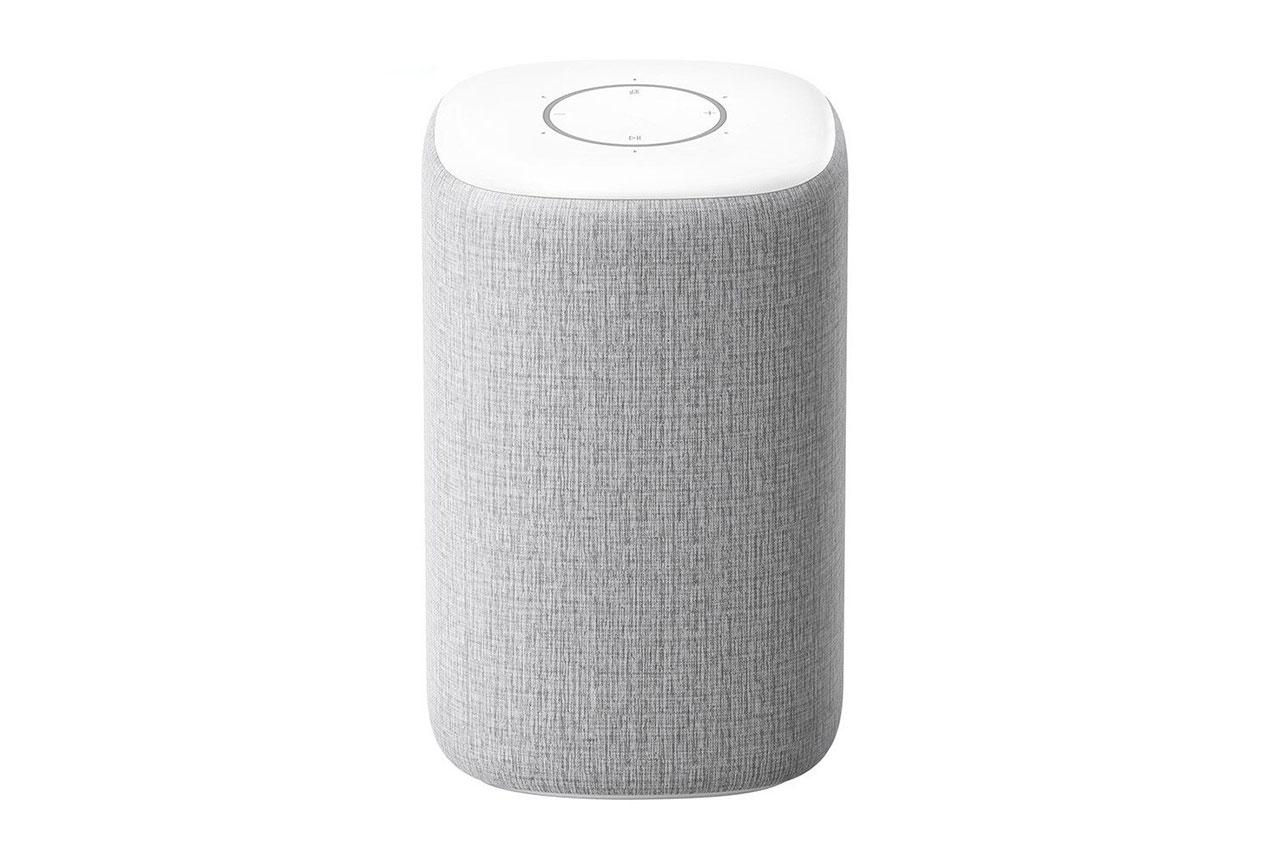 Xiaomi Mi Smart Speaker HD
Xiaomi Mi Smart Speaker HD


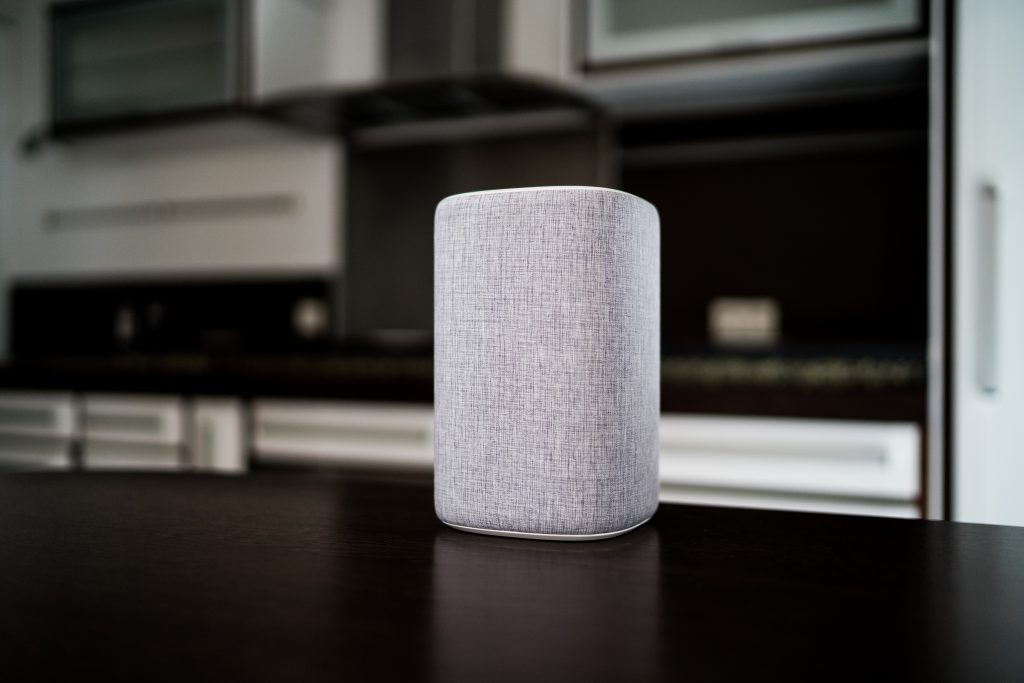
The Xiaomi Mi Smart Speaker HD had the second highest score in the “essential” segment of wireless speakers priced under 200 euros that we reviewed. It was bested in this group only by the Amazon Echo Studio, with an overall score of 124. The Speaker HD’s sister device, the Xiaomi XiaoAI Art Battery, came in third at 104. Our engineers found the overall performance impressive for a speaker in this price range, with natural-sounding midrange, very good bass precision at soft volume, and excellent directivity. It demonstrated powerful punch at nominal and soft volume. The overall score was hurt by a lack of low- and high-end extension. Bass resonances were noticeable even at low volume, and they sometimes masked upper range clarity and affected the precision of the attack.
In terms of the use cases, the device got the best score for its performance producing background music for a small gathering, and also had good marks when used in the bathroom and outdoors. It hit average marks in many use cases, such as bedtime, in the kitchen, and at a party, but was disappointing when used as the audio source for a movie, and did not perform very well when playing podcasts, either. The device was not ideal in the party scenario: at maximum volume, it was less loud than other similar models.
Sub-scores explained
The DXOMARK Speaker overall score of 109 for the Xiaomi Mi Smart Speaker HD is derived from the Playback and Recording scores and their respective sub-scores. In this section, we will take a closer look at these audio quality sub-scores and explain what they mean for the user. In this section, we will take a closer look at these audio quality sub-scores and explain what they mean for the user, and we will show some comparison data from two of the Mi Smart Speaker HD’s principal competitors in the Essential category, the Amazon Echo Studio and the TMall Genie X5.

Timbre
Xiaomi Mi Smart Speaker HD
152
DXOMARK timbre tests measure how well a wireless speaker reproduces sound across the audible tonal range and takes into account bass, midrange, treble, tonal balance, and volume dependency.
The Xiaomi Mi Smart Speaker HD earned an average score for timbre. Midrange sounds quite natural, but the tonal balance lacked low- and high-end extension. Bass resonance occurred even at low volume. When playing podcasts, the sound was impaired by inconsistent voice rendering — a general lack of clarity and not enough bass on male voices.

Dynamics
Xiaomi Mi Smart Speaker HD
137
Our dynamics tests measure how well a device reproduces the energy level of a sound source, taking into account attack, bass precision and punch.
The Xiaomi Mi Smart Speaker HD scored above average for dynamics, performing particularly well at soft volumes for bass precision and punch. Not surprisingly, this is reflected in the use cases — the device works well providing background for a small gathering or as an audio companion when relaxing. Its performance trails off at lower and higher volumes. In the party use case (higher volumes), punch lacks strength. Attack is impaired by bass resonances that muddy upper range clarity and affect precision.
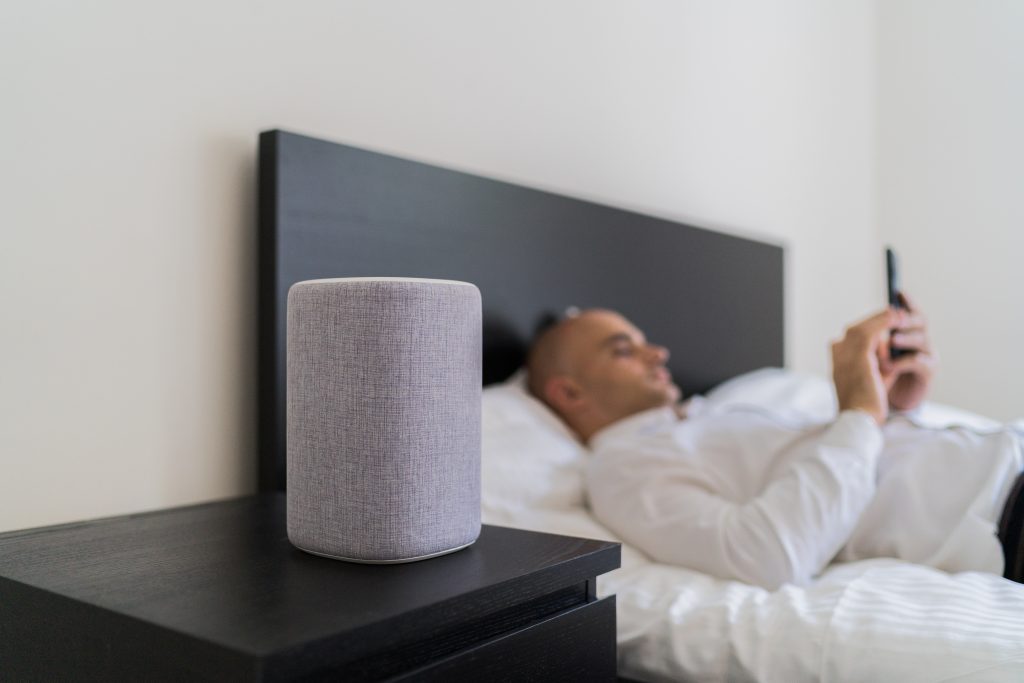

Spatial
Xiaomi Mi Smart Speaker HD
111
Our spatial tests measure a speaker’s capability to reproduce stereo sound in all directions, taking into account localizability, balance, wideness distance and directivity. Please note that wideness is 0 on mono speakers and speakers that cannot deliver a significant stereo effect.
As a result of good directivity (and being omnidirectional), the device works best, and its scores rose, when it was placed in the center of the room — at a small gathering or party, everyone present hears the same quality of sound. Our engineers noted that treble content was slightly louder from the corners of the device. Vocal content often seemed to be coming from the back of the device, which lowered its distance score, and localizability was not very precise. It’s worth noting that the device does not reproduce stereo content — that’s why the wideness score is zero.
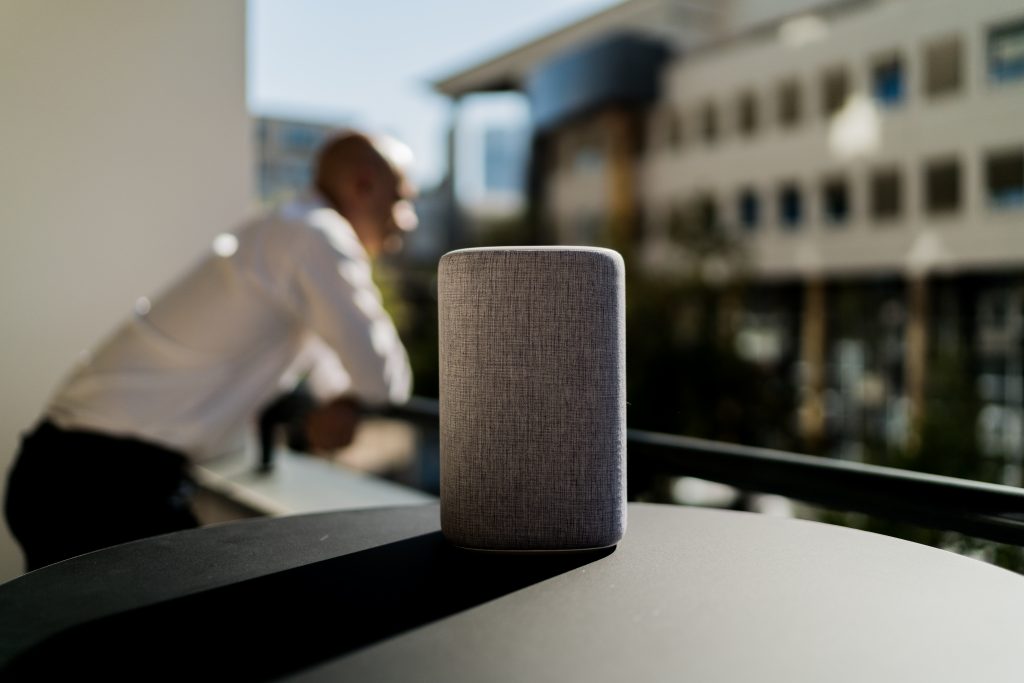

Volume
Xiaomi Mi Smart Speaker HD
141
Our volume tests measure both the maximum loudness a speaker is able to produce and how smoothly volume increases and decreases based on user input.
The Xiaomi speaker’s overall volume performance was solid for consistency and was also pretty consistent across different styles of music. The maximum volume, however, was not as loud as other devices with similar specs. This is why you can only see two distortion (THD) curves in the artifacts paragraph, since the loud and the maximum volumes are identical.
It would not be ideal for playing loud music at a house party. Here are sound pressure levels we measured when playing our sample recordings of hip-hop and classical music at maximum volume:
| Correlated Pink Noise | Uncorrelated Pink Noise | Hip-Hop | Classical | Latin | Asian Pop | |
| Xiaomi Mi Smart Speaker HD | 75.5 dBA | 72.6 dBA | 74.1 dBA | 65.6 dBA | 75.3 dBA | 68.9 dBA |
| Amazon Echo Studio | 84.8 dBA | 79.6 dBA | 81.1 dBA | 72.2 dBA | 80.7 dBA | 75.6 dBA |
| TMall Genie X5 | 75.4 dBA | 73.8 dBA | 72.1 dBA | 67.1 dBA | 73.9 dBA | 66.3 dBA |

Artifacts
Xiaomi Mi Smart Speaker HD
133
Our artifacts tests measure how much source audio is distorted when played back, along with such other sound artifacts as noise, pumping effects, and clipping. Distortion and other artifacts can occur both because of sound processing and because of the quality of the speakers.
The Xiaomi wireless speaker struggled with artifacts in some important areas. Our engineers measured more than 500 milliseconds, or about a half second, of delay between the audio for video and the speaker, making it impractical for use while watching movies or videos unless the user makes a manual delay adjustment to the television. The device also produced bass distortion at nominal and loud volume, and bass overshooting on electronic music with strong low-end content.
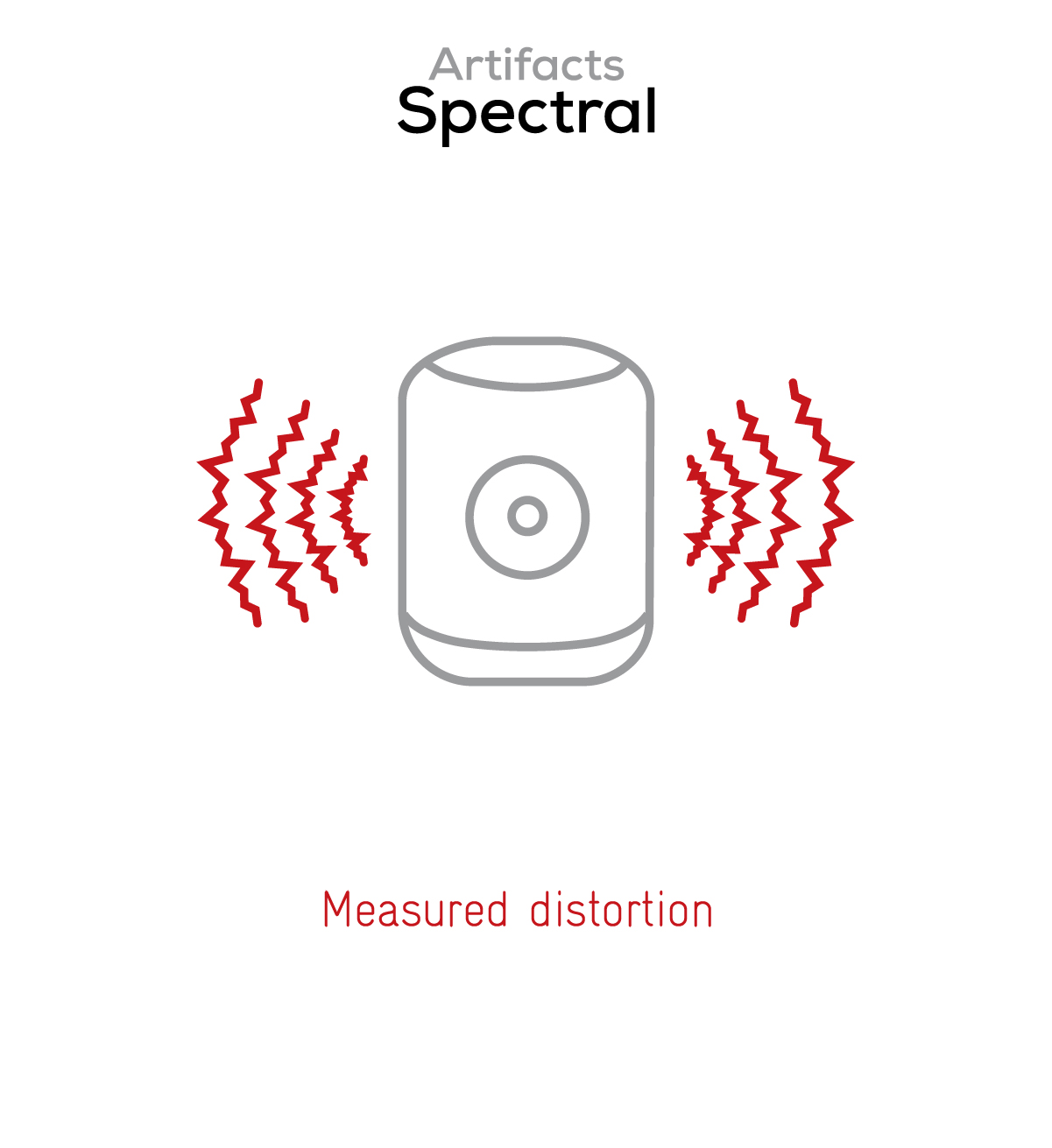
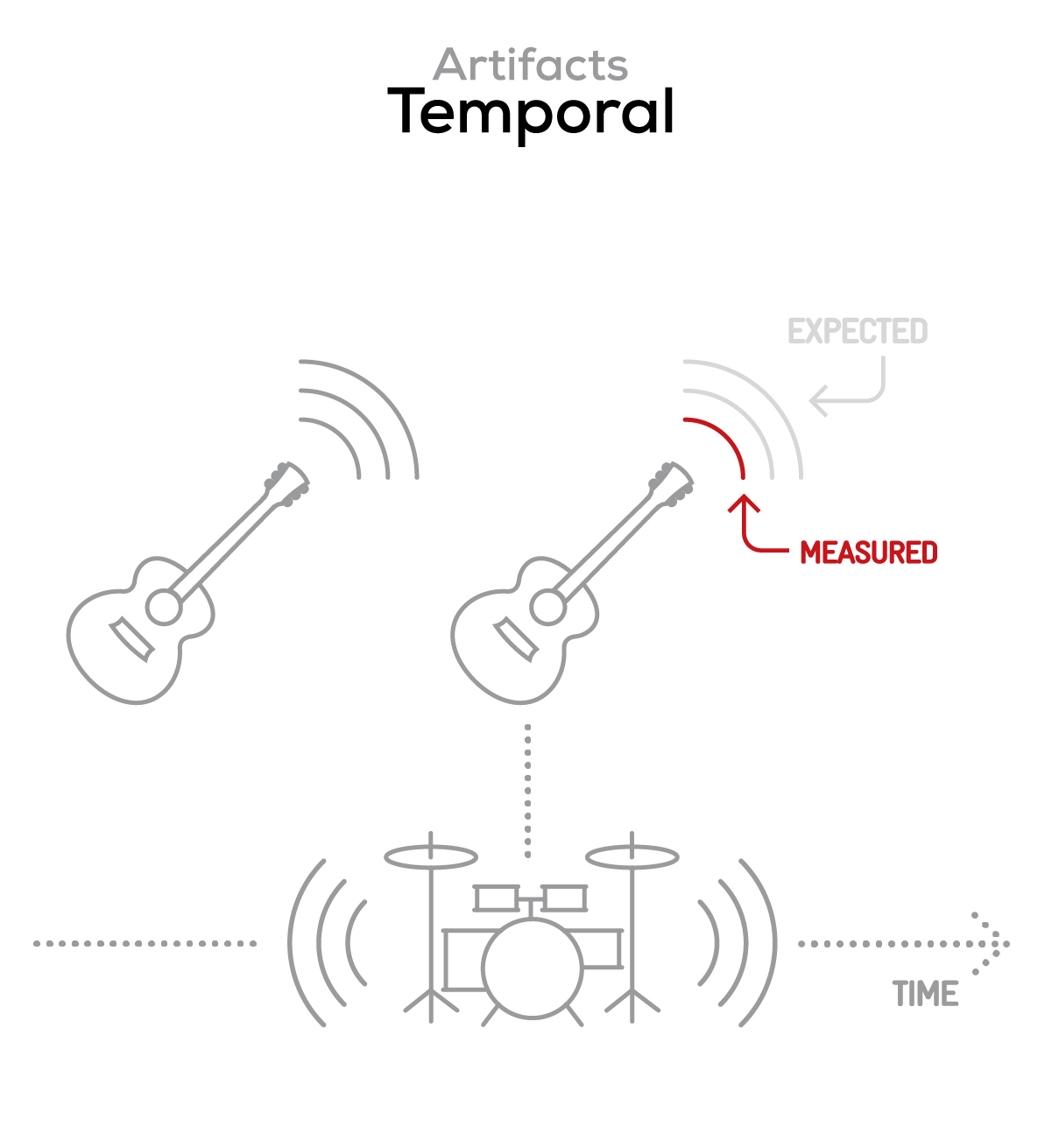
Conclusion
Overall the Xiaomi Mi Smart Speaker HD provides good value for the money at this price point, and performs well in a variety of common daily uses, including playing background music at a gathering (especially when placed in the center of the room), or while working in the kitchen or taking a shower. It produces quite natural midrange, good bass, and powerful punch at nominal and soft volumes, and has great directivity. But it falls down as a source of audio for watching movies or videos, leading our engineers to recommend against using it as an audio source in those cases. The device also is not as loud at its highest volume as other devices with similar specs — it’s not ideal as a speaker for a loud house party.
Pros
- Good value for money
- Natural reproduction of midrange frequencies
- Good for listening to music in a variety of use cases, especially at low and nominal volume
- Sound is evenly distributed at 360° around the speaker.
Cons
- Not recommended as a speaker for movies or videos due to perceivable audio latency
- Maximum volume is not as loud as other devices with similar specifications.
- Some problems with voice content, especially low male voices, that impinges on podcast listening, among other things.
- Bass resonances are noticeable even a low volume, and have an effect on upper range clarity.


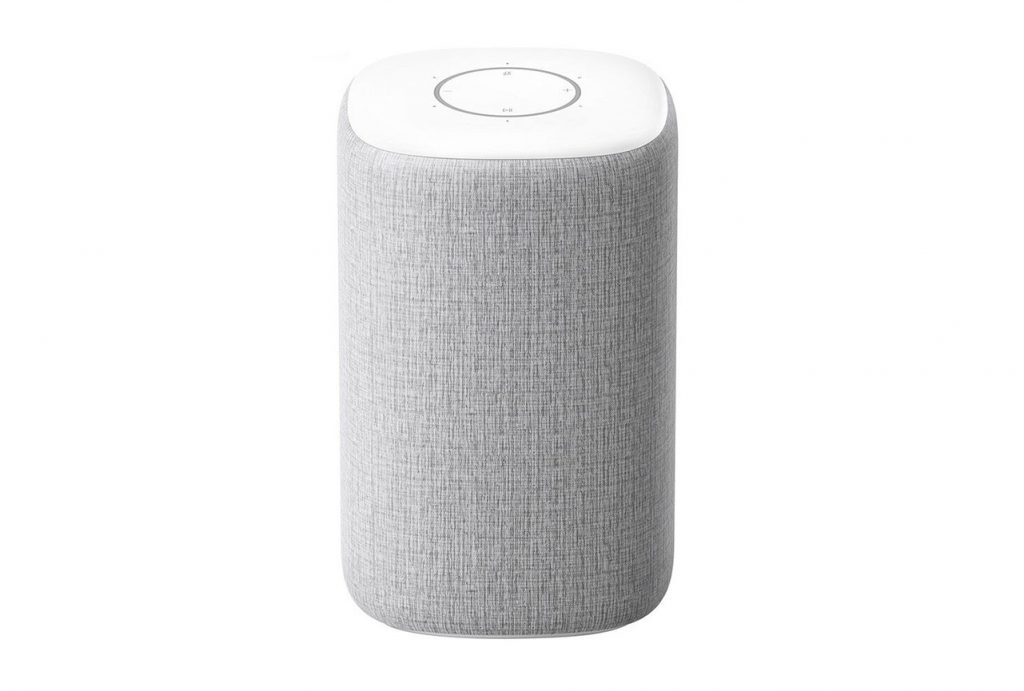
DXOMARK encourages its readers to share comments on the articles. To read or post comments, Disqus cookies are required. Change your Cookies Preferences and read more about our Comment Policy.